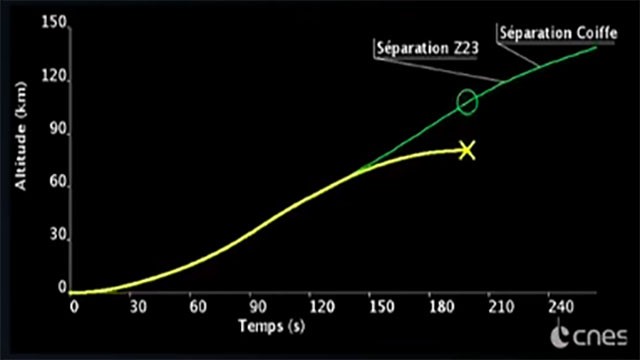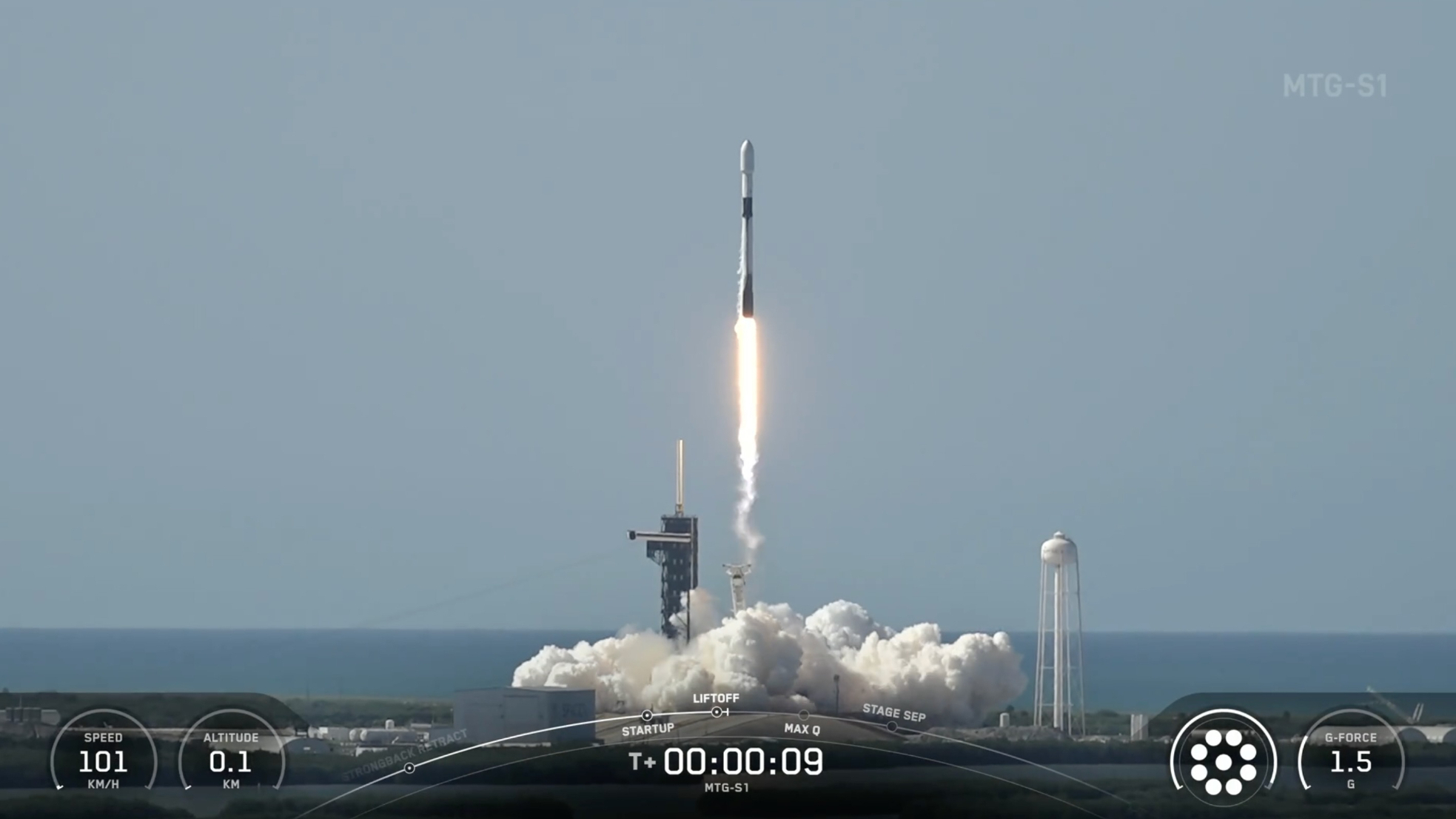Vega Rocket Suffers 'Major Anomaly' During Launch of UAE Satellite
Something went very wrong 2 minutes after liftoff.
A European Vega rocket suffered a "major anomaly" while launching a satellite for the United Arab Emirates late Wednesday (July 10), leading to the loss of the rocket and its payload, according to Arianespace, which built the booster.
The Vega rocket launched the FalconEye1 Earth-observation satellite for the United Arab Emirates (UAE) from the Guiana Space Center in Kourou, French Guiana. Liftoff occurred at 9:53 p.m. EDT (10:53 p.m. local time, or 0153 GMT July 11). The nighttime liftoff was a dazzling sight, but then something went very wrong.
"About 2 minutes after liftoff, around the Zefiro 23 ignition, a major anomaly occurred, resulting in the loss of the mission," said Luce Fabreguettes, Arianespace's Executive Vice President of Missions, Operations and Purchasing, in a televised statement just after the failed launch.
Related: Europe's Vega Rocket Launches on 1st Flight (Gallery)

Fabreguettes said Arianespace wanted to "express our deepest apologies for the loss of our payload." She added that officials would look at data from the launch and provide more information as they investigate what happened.
The launch trajectory shown on the broadcast appeared to deviate from the normal track shortly after the Vega rocket's liftoff, Arianespace officials said shortly after launch.
"Data analyses are in progress to clarify the reasons for this failure," European Space Agency officials wrote in a status update on Wednesday morning. "An independent inquiry commission will be set up in the coming hours."
Breaking space news, the latest updates on rocket launches, skywatching events and more!
FalconEye1 was to be the first in a planned pair of satellites to be used for everything from crop monitoring to disaster management. It and a twin satellite, FalconEye2, were planned to image the ground in high-resolution optical wavelengths (similar to wavelengths that the human eye can see.)
FalconEye1 had a mass of roughly 2,600 pounds (1,200 kg), which is relatively small; the Hubble Space Telescope, for example, had about 10 times that launch mass. Airbus Defence and Space was the satellite's prime contractor, and Thales Alenia Space the co-prime.

Arianespace's Vega rocket is a light-lift vehicle that stands 98 feet (30 meters) tall and is 10 feet (3 meters) wide at its widest point. It has four stages to launch payloads into orbit — the first three have solid propellants and the final, upper stage is a restartable stage fueled by liquid propellant.
The first Vega launch occurred in 2012 from the Guiana Space Center. Tonight's anomaly is the first failure for the relatively young booster. It was sixth Vega launch in 2019 and the 15th overall since Vega began flying.
Editor's note: This story was updated to include new comments from the European Space Agency on the Vega launch failure of July 10, 2019.
- Ariane 5 Rocket Lofts 2 Satellites in Gorgeous Sunset Launch
- Meet Ariane 6 & Vega C: Europe's New 'Rideshare' Rockets (Videos)
- In Photos: Soyuz Rocket Launches Russia's Meteor M2-2 Weather Satellite
Follow Elizabeth Howell on Twitter @howellspace. Follow us on Twitter @Spacedotcom and on Facebook.
Join our Space Forums to keep talking space on the latest missions, night sky and more! And if you have a news tip, correction or comment, let us know at: community@space.com.

Elizabeth Howell (she/her), Ph.D., was a staff writer in the spaceflight channel between 2022 and 2024 specializing in Canadian space news. She was contributing writer for Space.com for 10 years from 2012 to 2024. Elizabeth's reporting includes multiple exclusives with the White House, leading world coverage about a lost-and-found space tomato on the International Space Station, witnessing five human spaceflight launches on two continents, flying parabolic, working inside a spacesuit, and participating in a simulated Mars mission. Her latest book, "Why Am I Taller?" (ECW Press, 2022) is co-written with astronaut Dave Williams.
